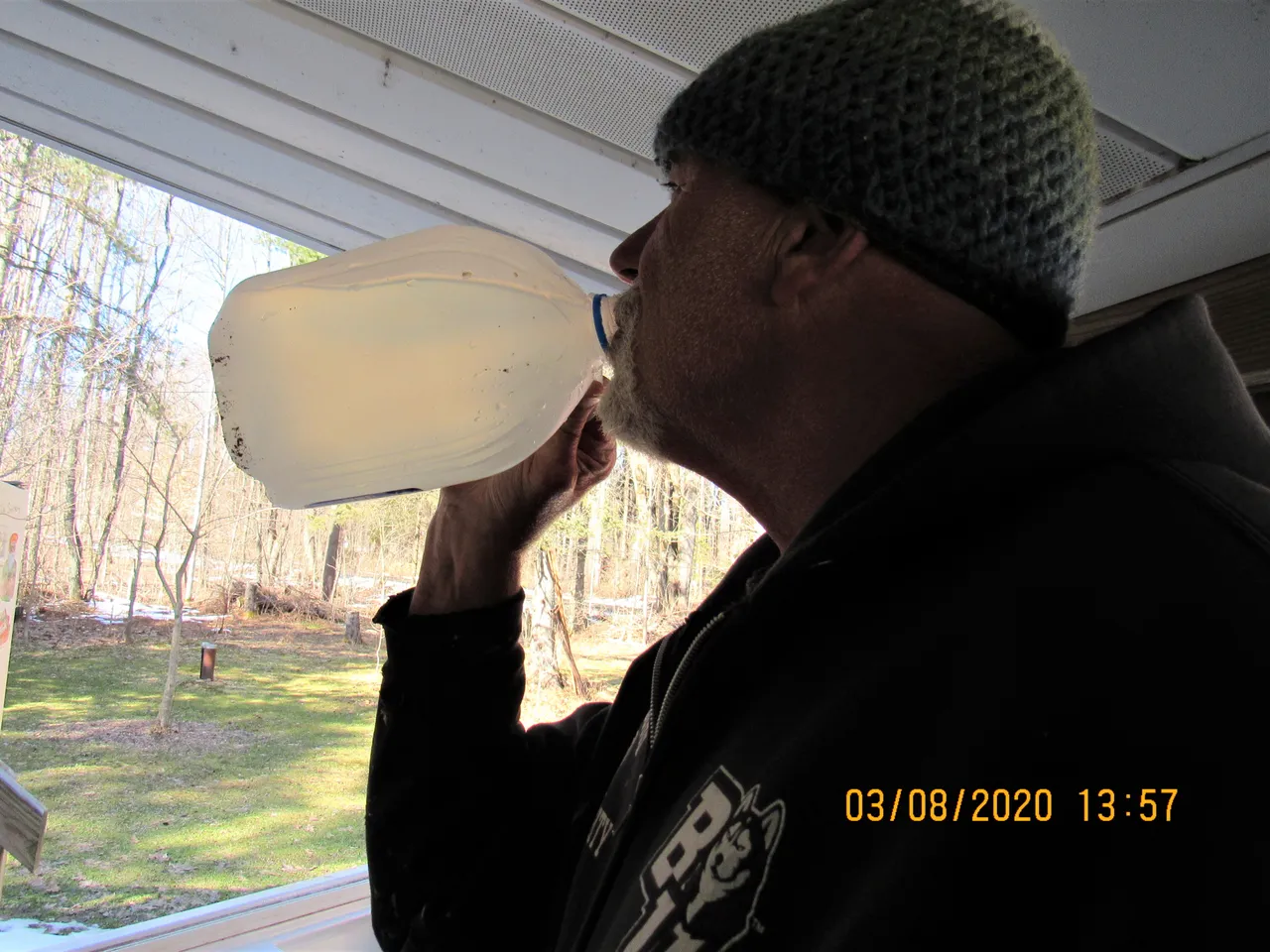Getting home from our vacation a little later than usual, the sap from the Sugar Maple trees was already running. With no time to waste, the day after we arrived home here in Upstate New York was a very busy day.
We needed to tap all of the trees as soon as possible, because the sap from the trees only runs for about 4 weeks and we were already a week behind.
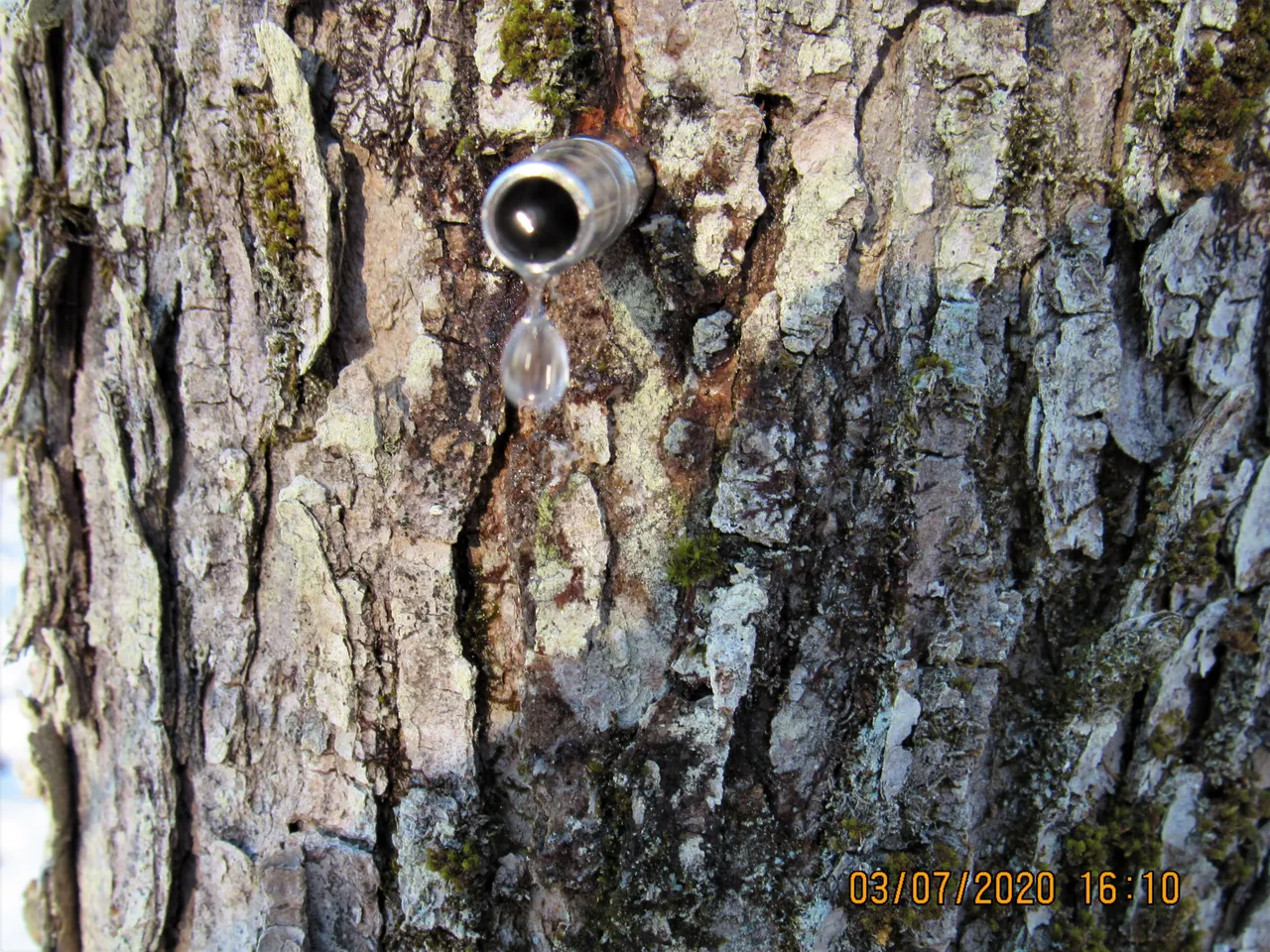
The very first step was preparing all of the gallon milk jugs we had saved over the previous three months.
It is extremely important that the containers are clean. Sap from a maple tree can become contaminated if the collecting container is not sterile.
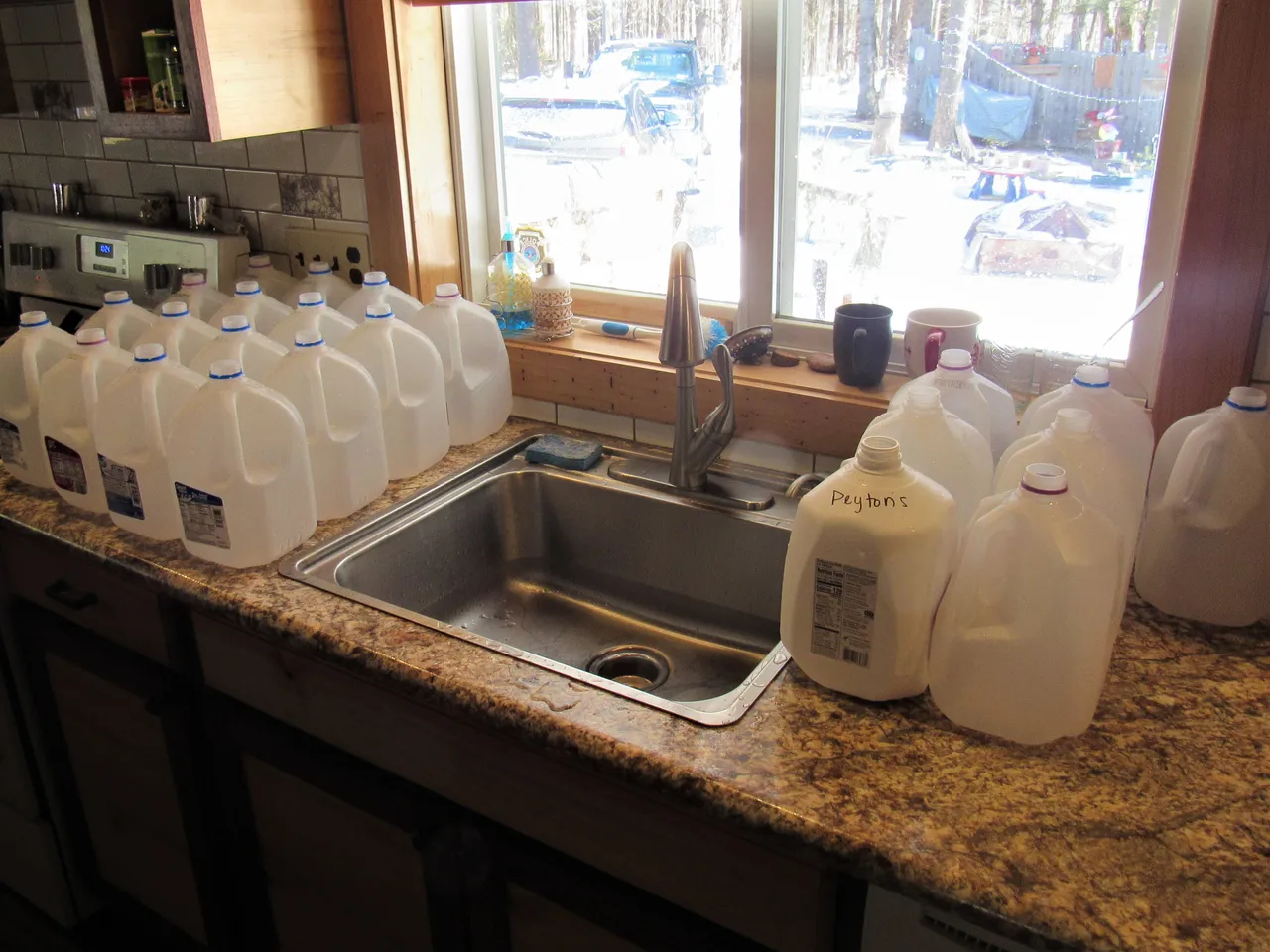
As the milk jugs were emptied over the previous three months they were thoroughly washed and put into storage, but to ensure that no bacteria was present, I rinsed them one more time with very hot water. The caps to the jugs were boiled to ensure that they were sterilized as well.
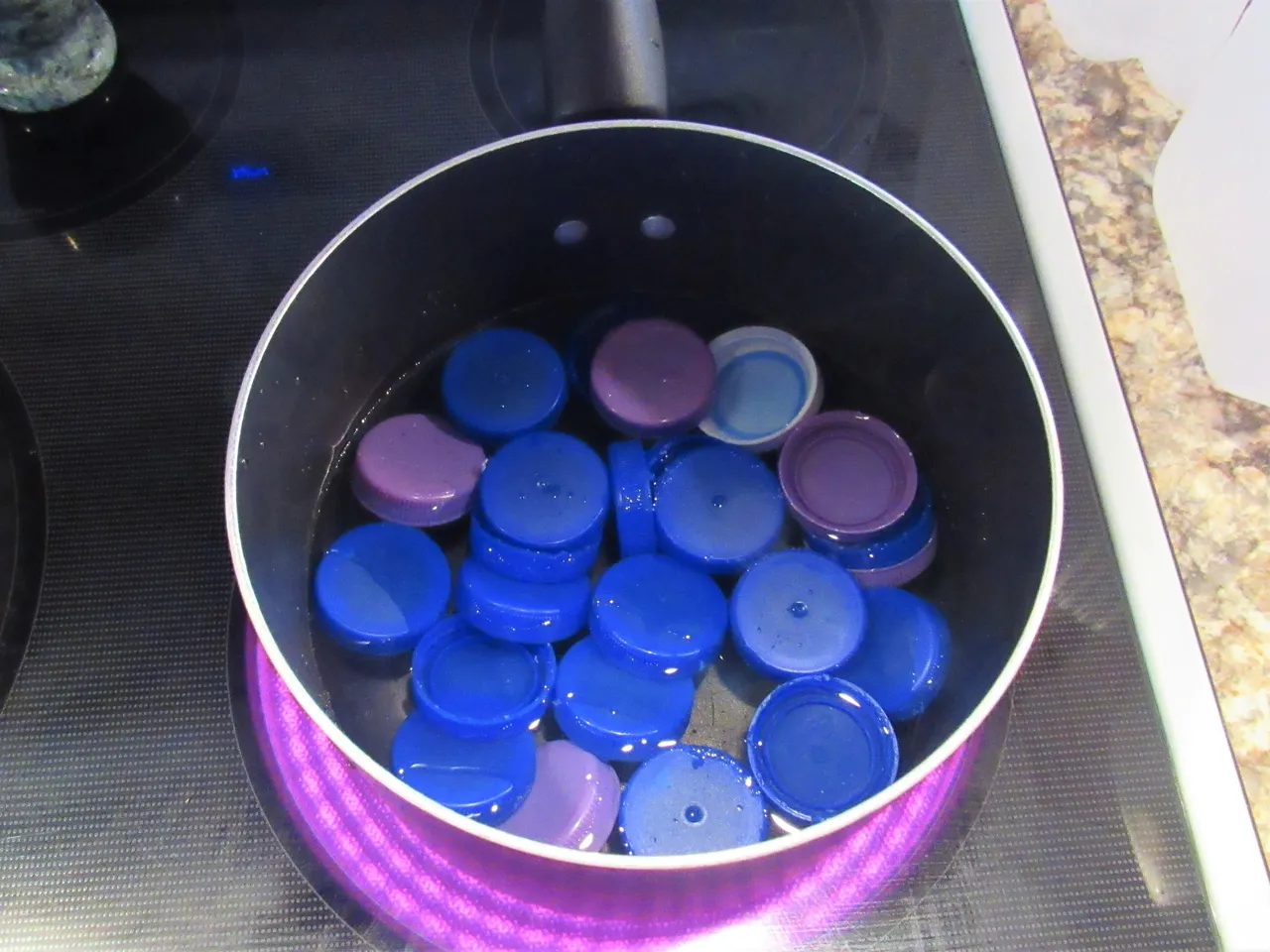
Once everything was clean, holes were drilled in the caps.

A 3/8th drill bit was used. The hole in the cap needs to allow the tubing to fit snugly so that nothing but sap will collect in the jug.
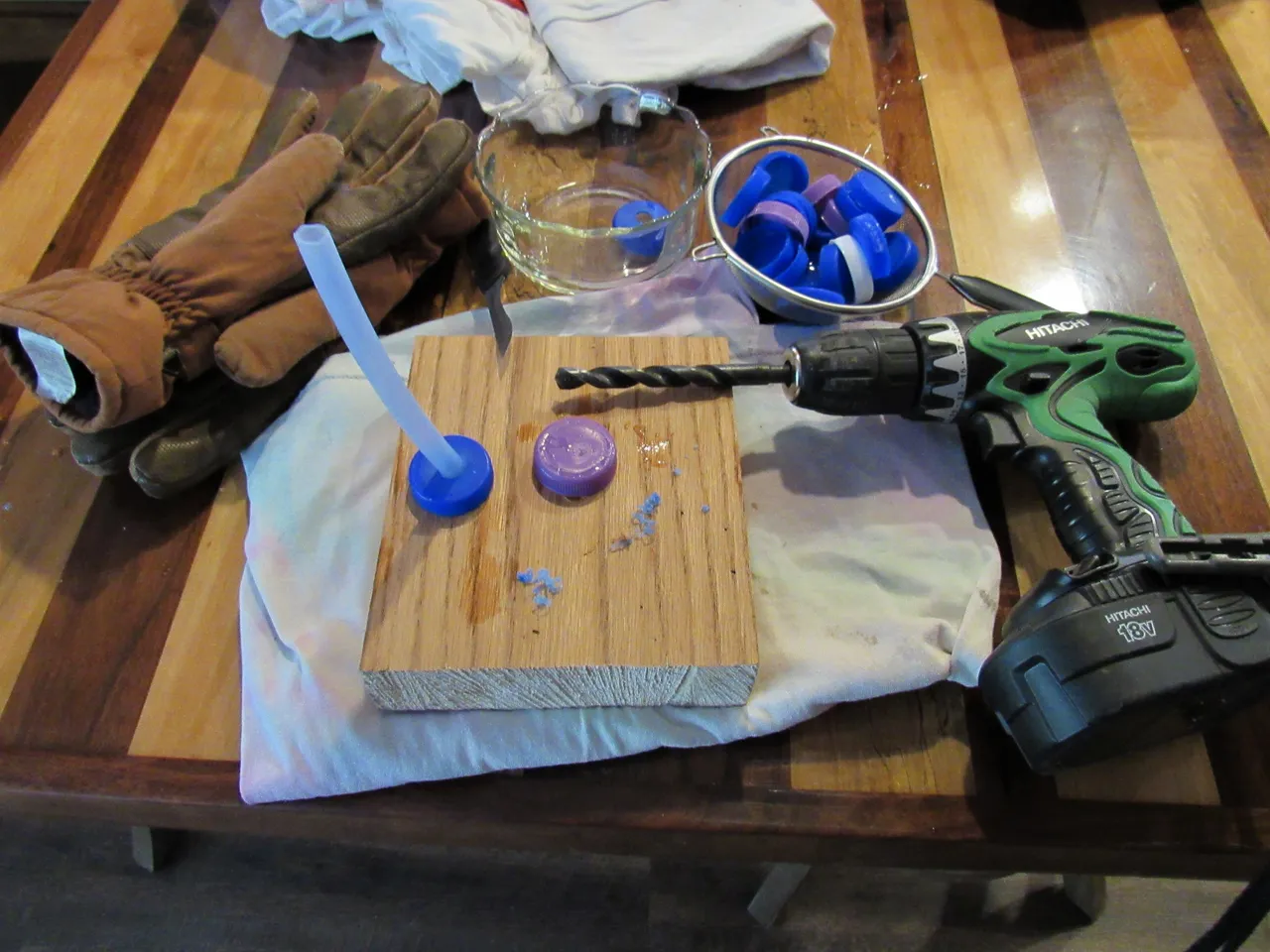
With all of the jugs ready to go, the next step is to drill the holes in the trees. For this step a 5/16 drill bit is used.
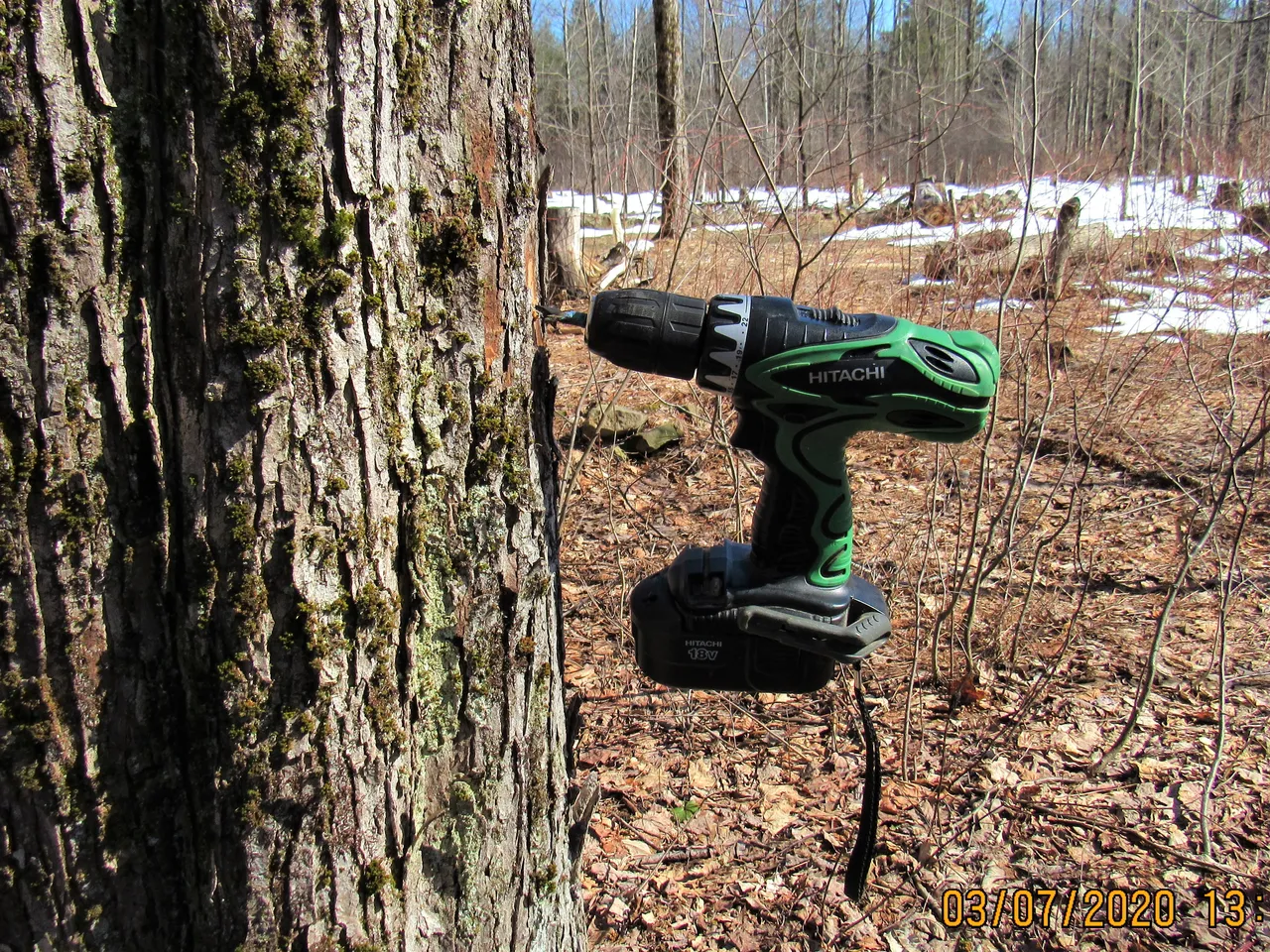
After these holes are drilled, the sap is allowed to run for five minutes or so before placing the tap in the hole. Allowing the sap to run prior to tapping will allow the hole to be flushed out, eliminating the chance for any debris to get into the container. I like to mark each hole by placing a stick in it, this makes it much easier to find the hole when I return to hammer in the tap. The hole is drilled to a depth of about two inches, and is drilled on a slight downward angle.
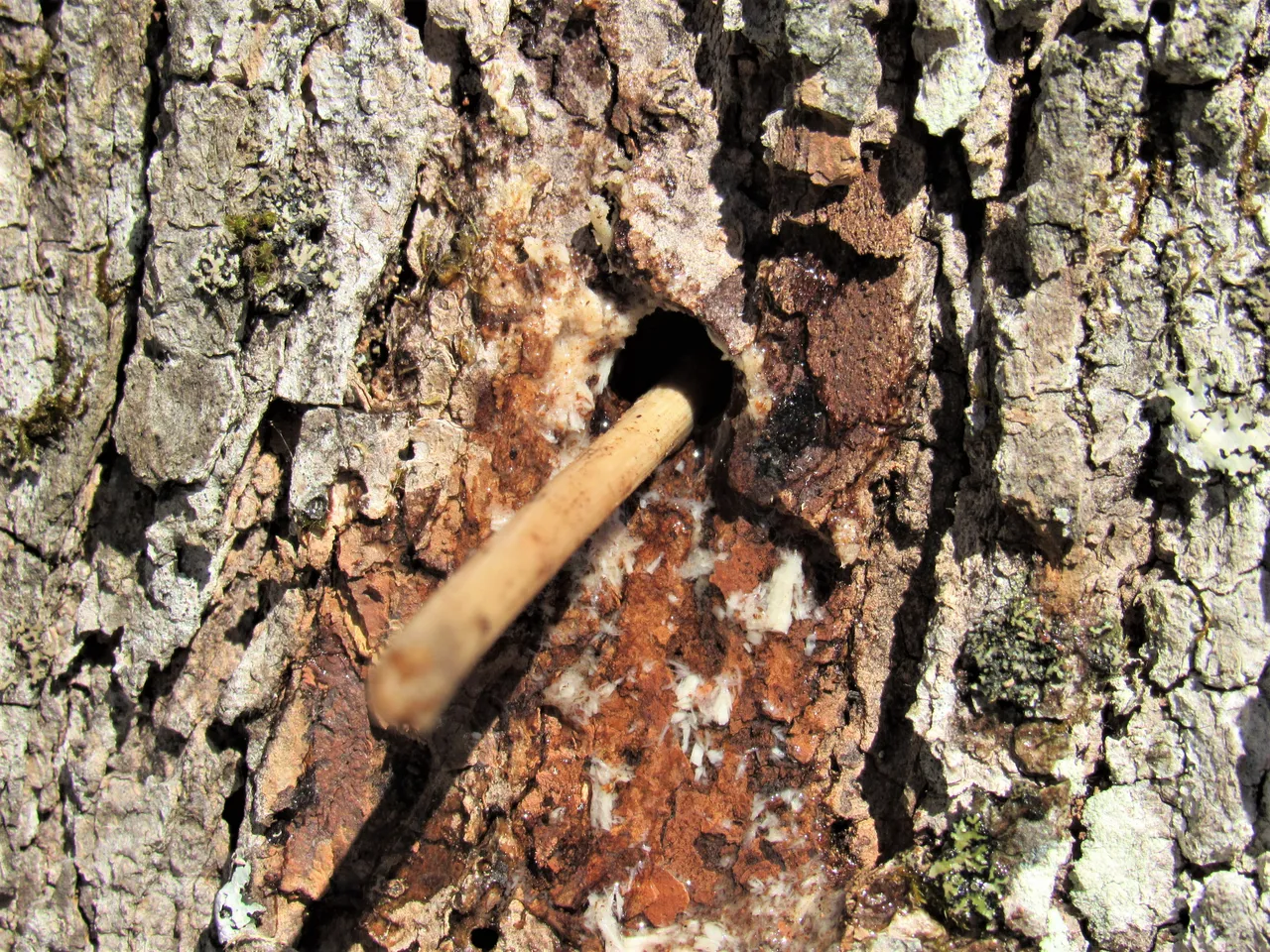
This will allow the sap to run freely.
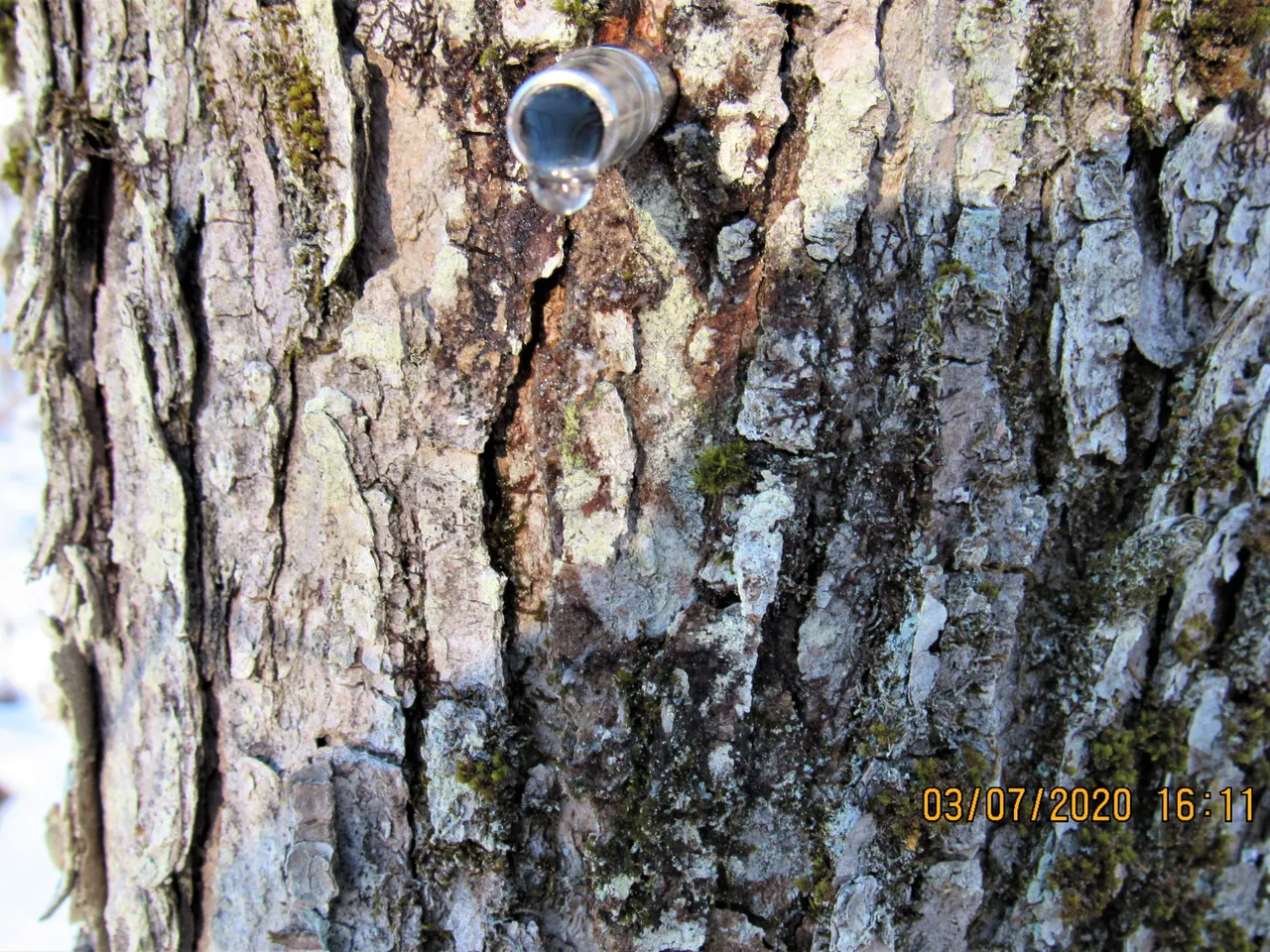
This year we tapped an additional five trees, bringing the total of tapped trees to 21.
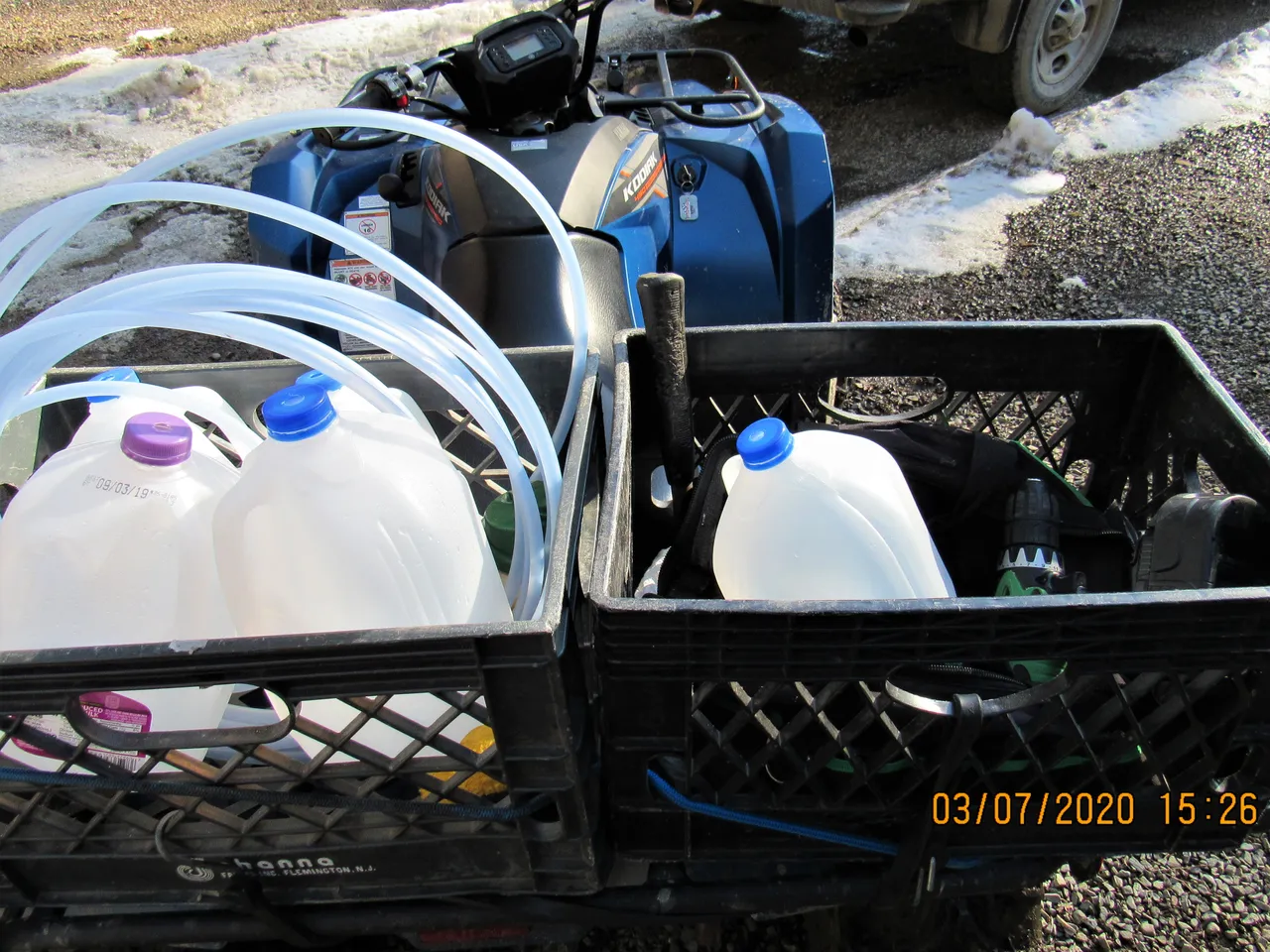
With it taking 50 gallons of sap to make 1 gallon of syrup, I like to collect 50 gallons of sap at a time to process. Like any other food source, the sap has an experation date before it spoils. After seven days the sap must be cooked.
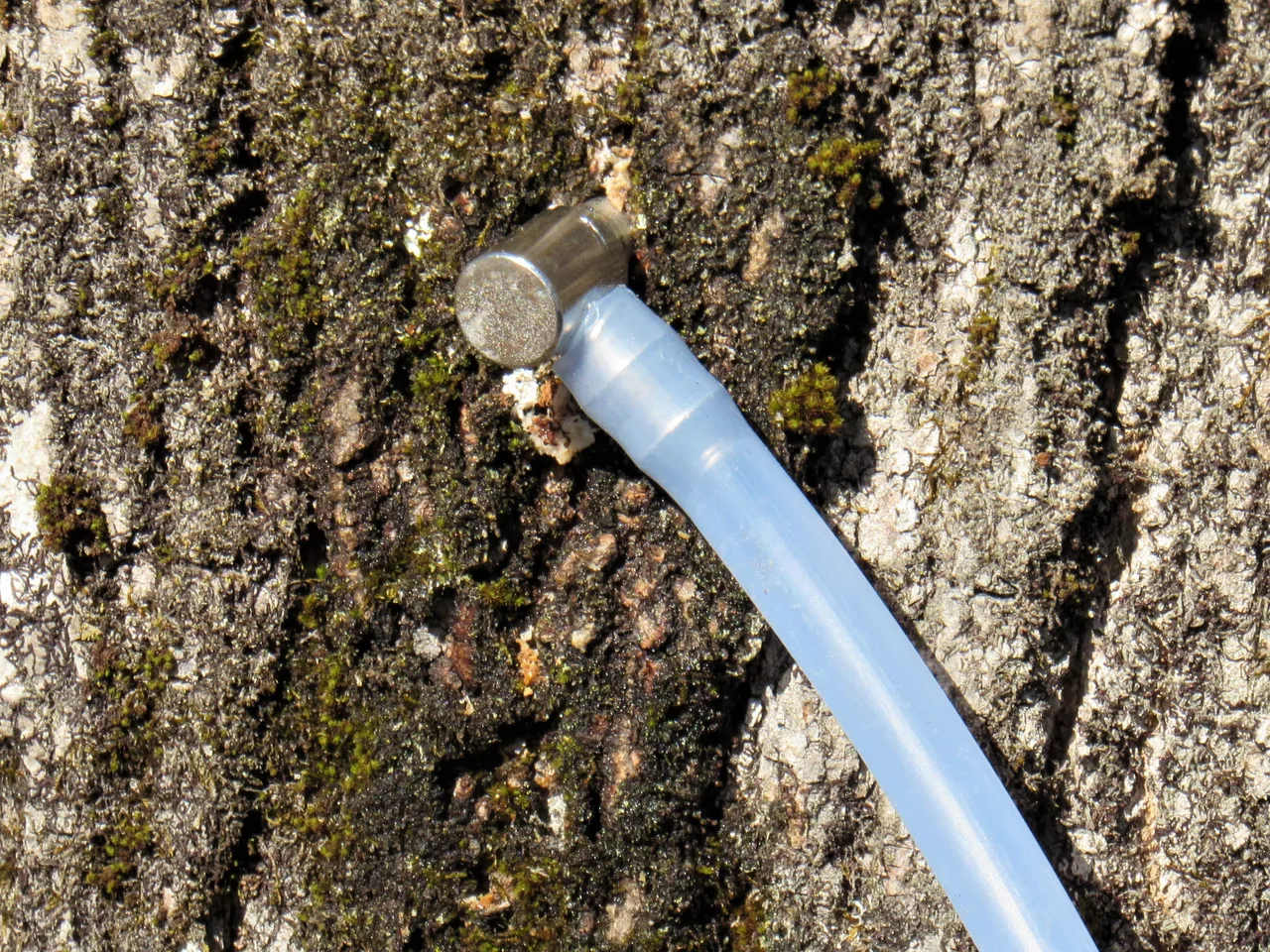
Year in and year out this Sugar Maple tree is the best producer. You can see that two taps have been placed in this tree. The rule of thumb is that a tree 12 to 18 inches in diameter can only have one tap, while larger trees can have two taps .
The last thing you want to do is cause any damage to a tree by extracting too much sap. The sap is the life blood of a tree.
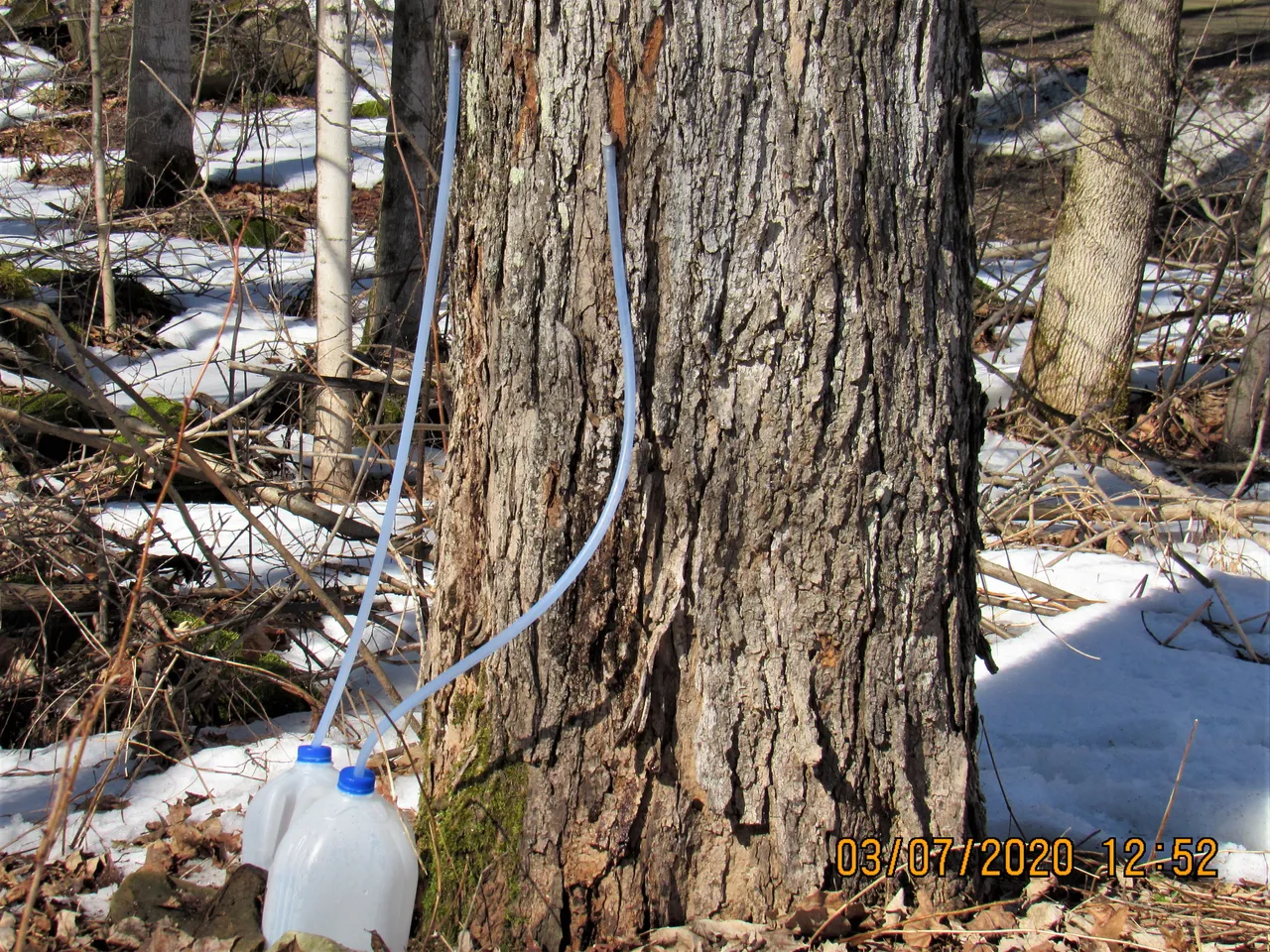
Despite this tree having a diameter just over 18 inches, I like to play it safe and therefor I only tapped it once.
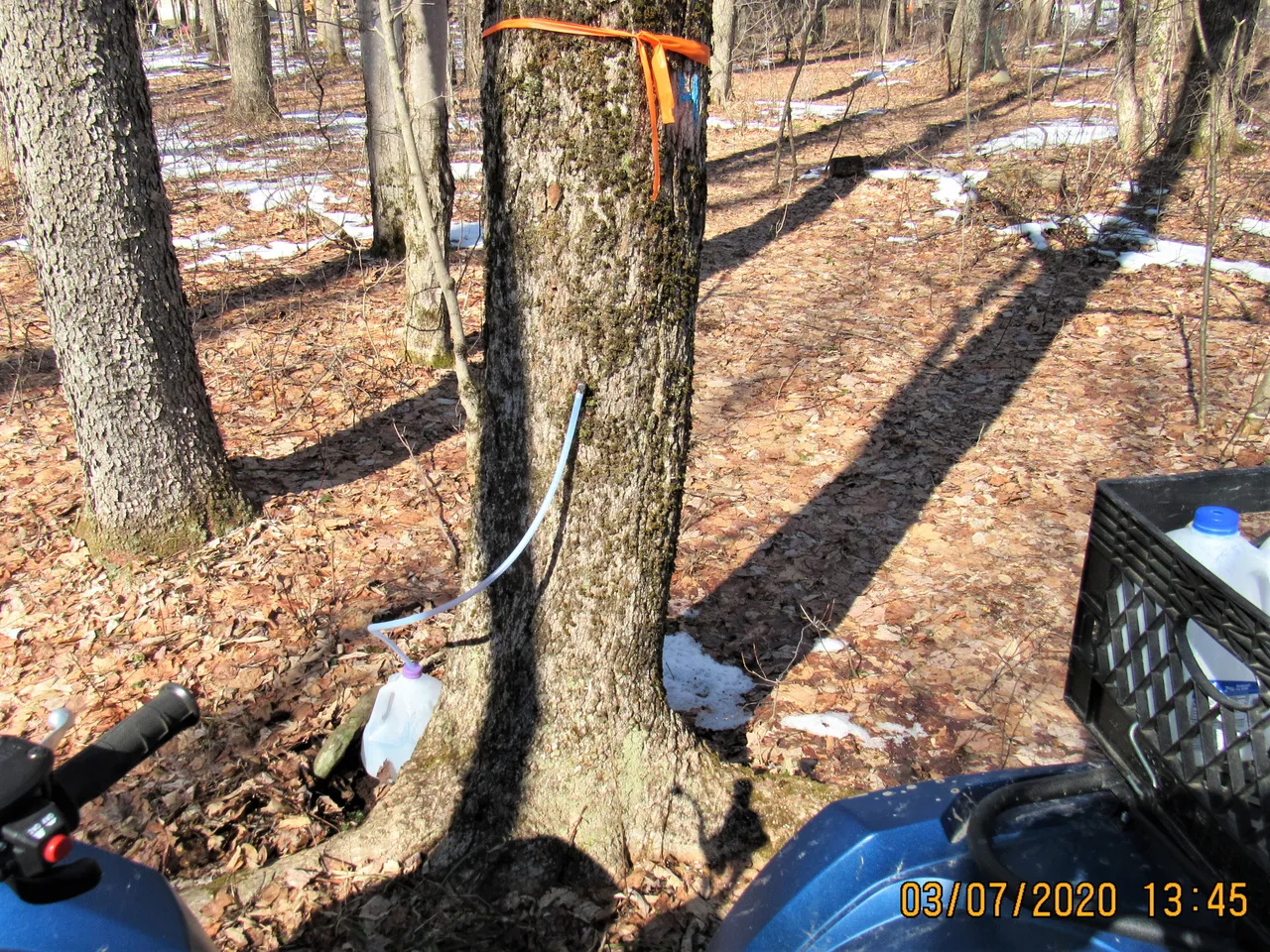
When deciding where to drill the hole for the tap you must be aware of which side of the tree will receive the most sun.
Placing the tap in the right spot is paramount for extracting as much sap as possible.
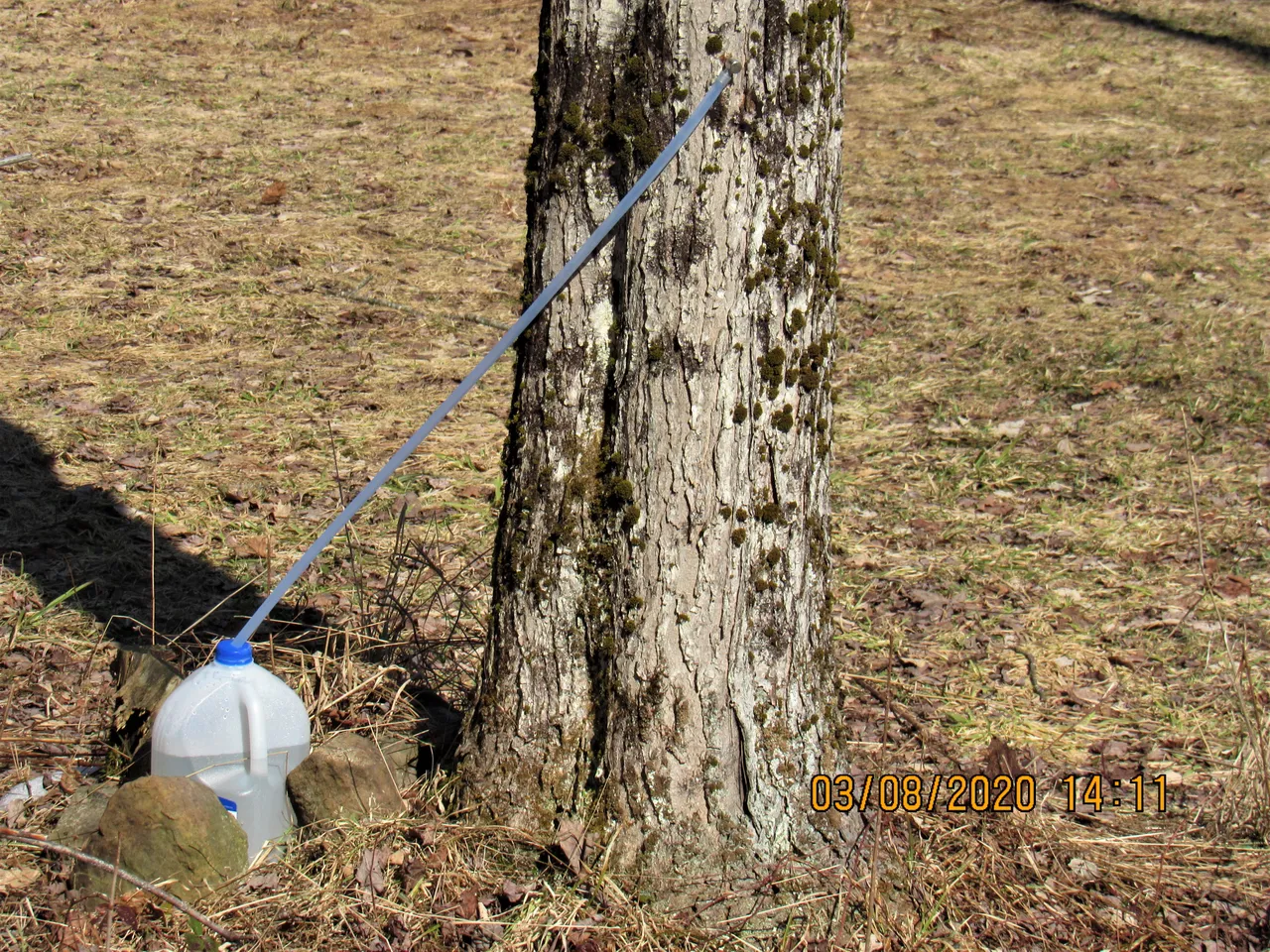
The placement of the hole should also be 3 to 4 feet from the base of the trunk.
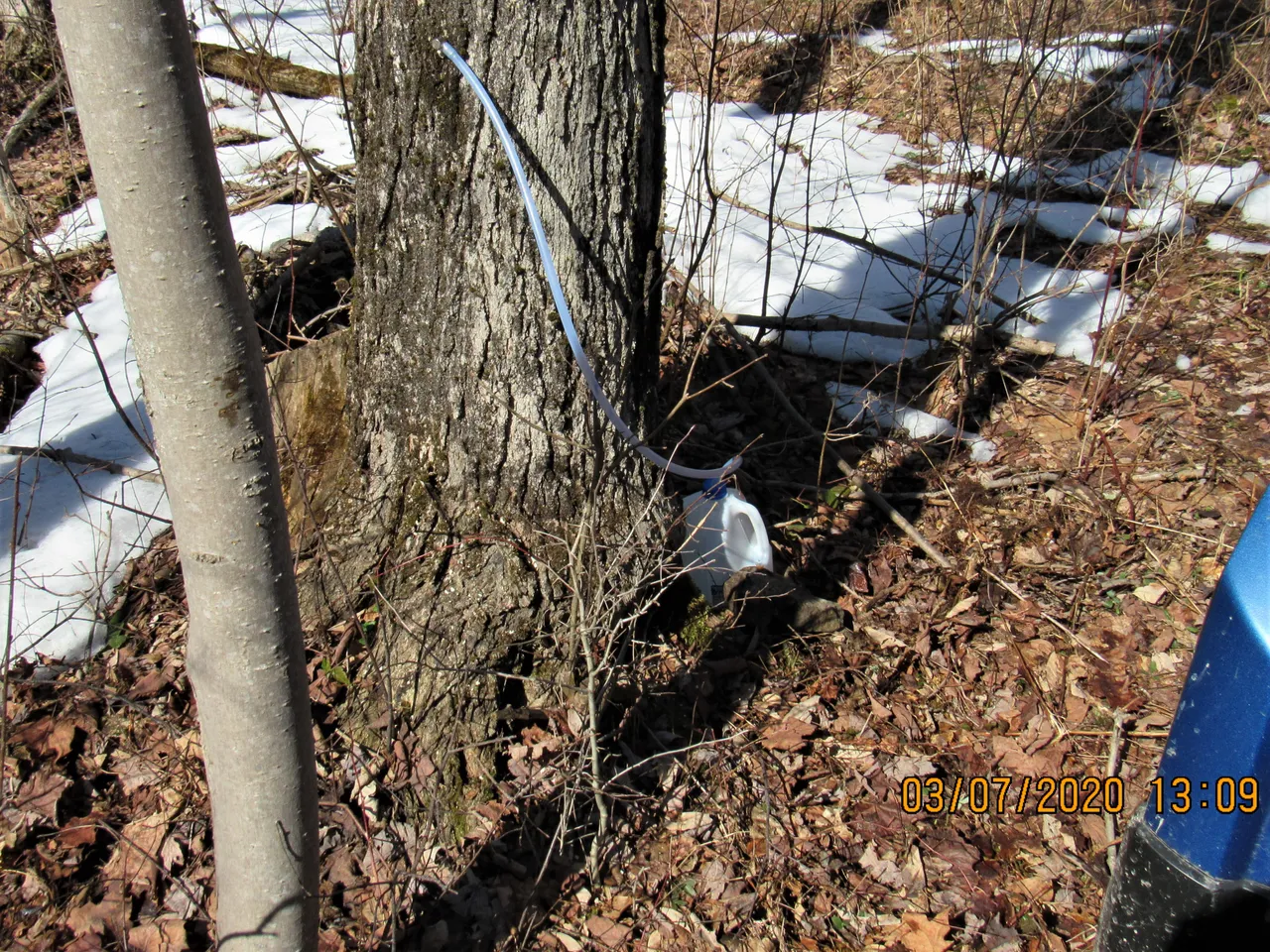
With the last tree tapped, it is just a matter of the time before these gallon jugs are collecting the bounty these wonderful trees offer up this time of year.
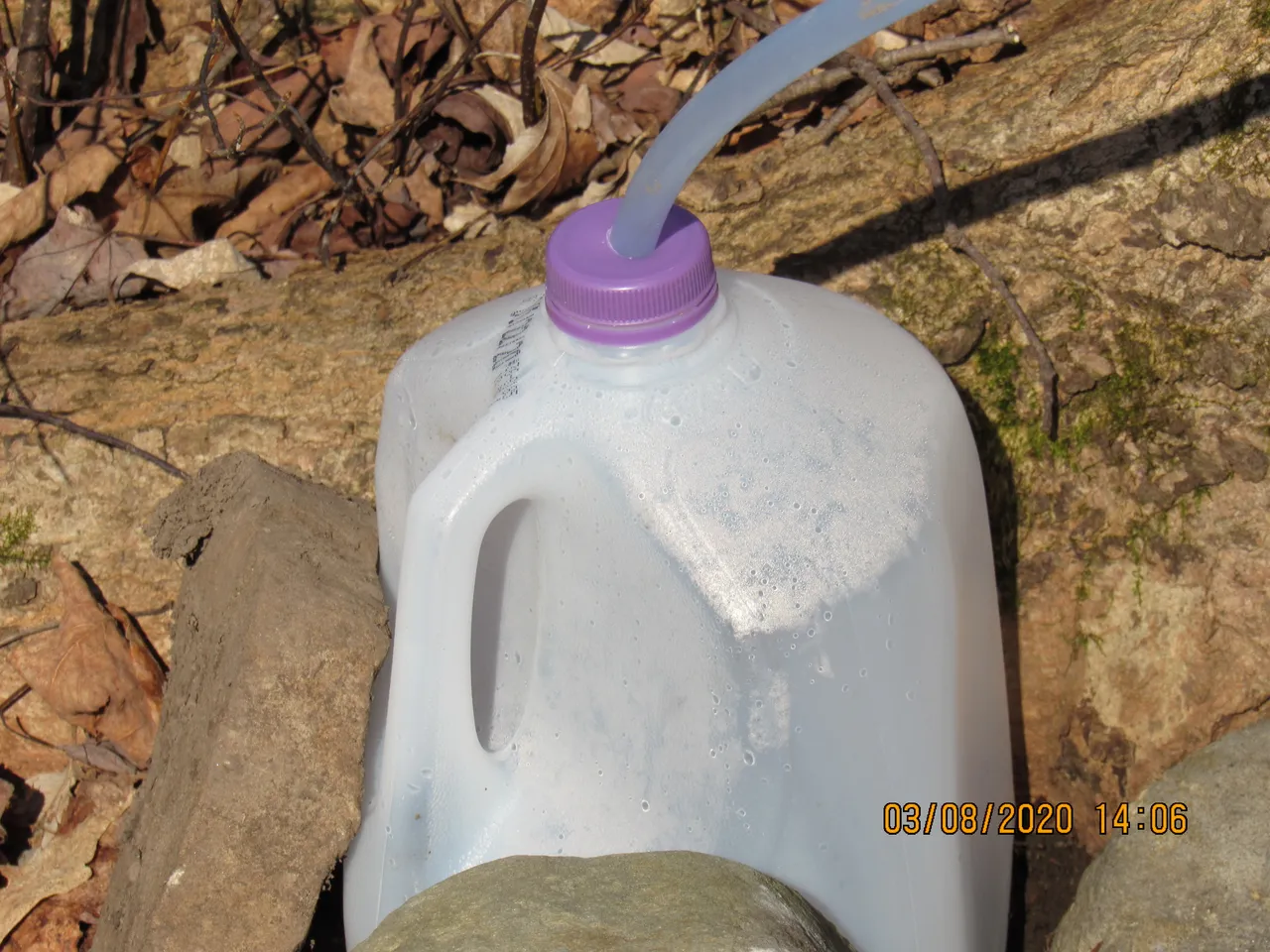
PEACE
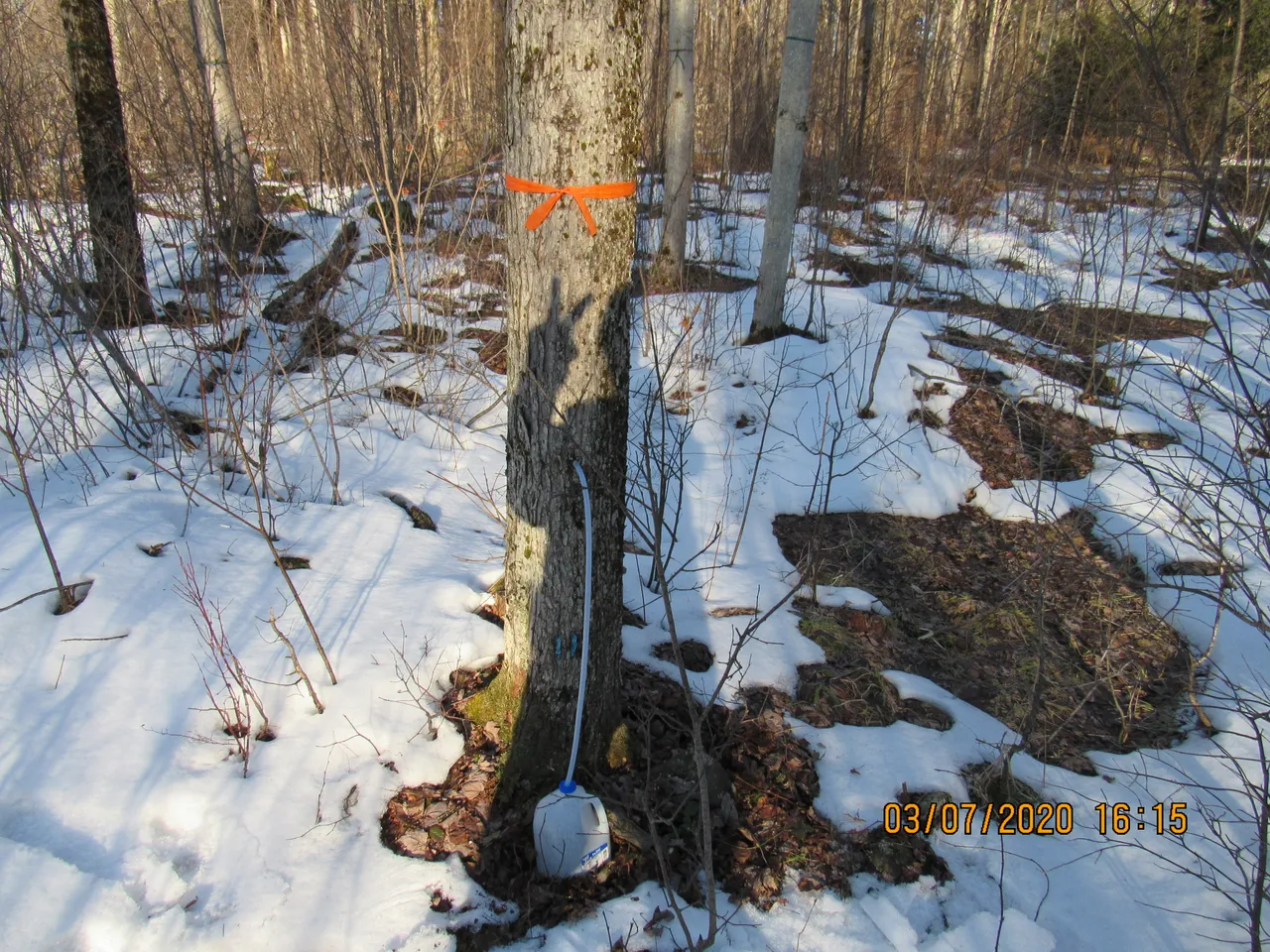
You may be wondering what makes the sap run to the top of the tree and then back down the tree, making its way to the tree's root system. The perfect scenario is for the day time temperature to be 48 degrees or higher, with the temperatures dropping below freezing at night. This change in temps will have the sap reaching the canopy of the tree during the day and retreating to the roots as the temp drops.
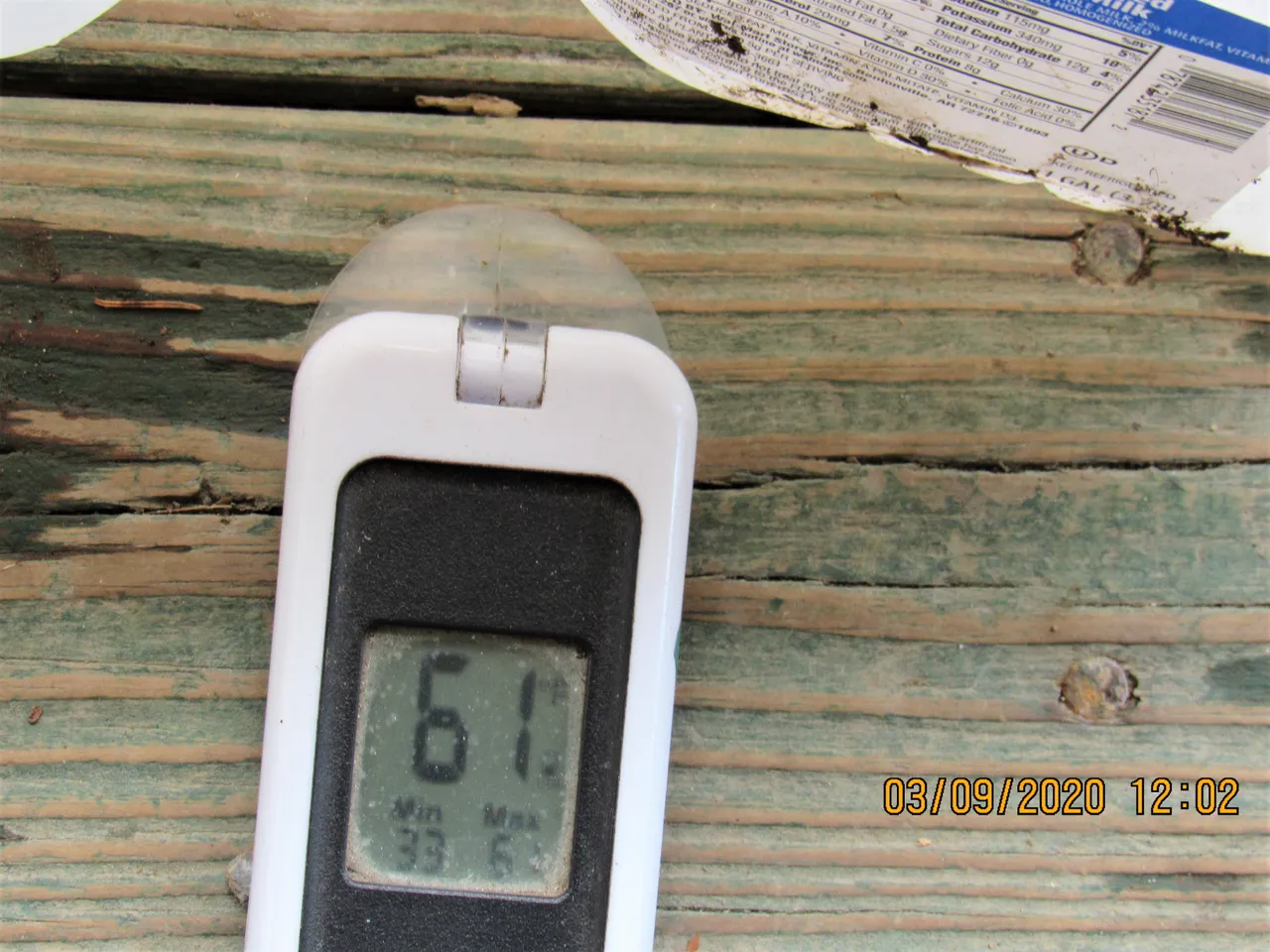
On a sunny day the buds of the Sugar Maple warm up quickly and will be calling for sap throughout the day.
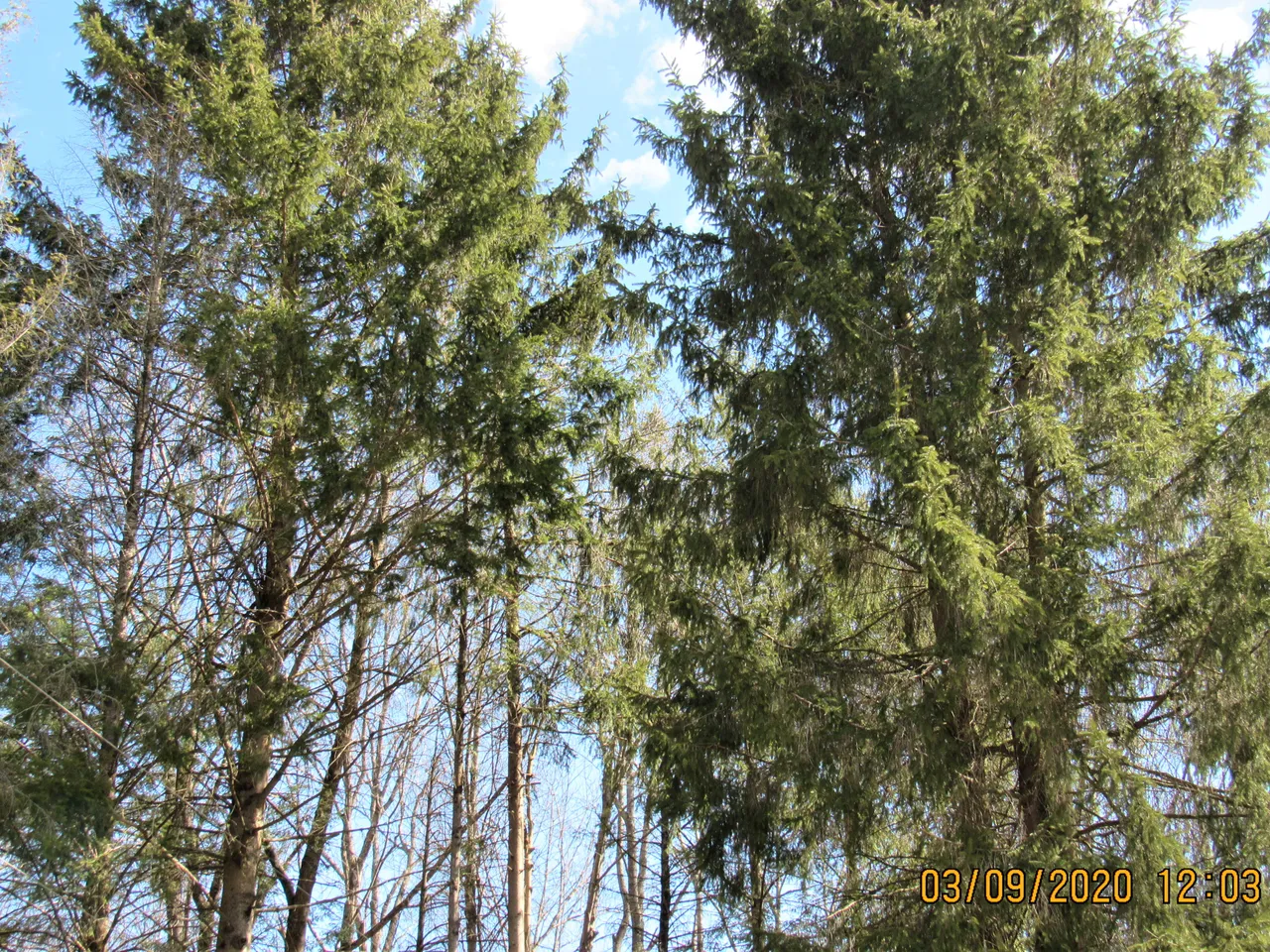
A day void of wind is also ideal as the canopy of the tree will remain heated. A lack of wind, warm temps, and a sunny day will produce a bounty of sap in a 24 hour period. These conditions were all inline the day the trees were tapped.
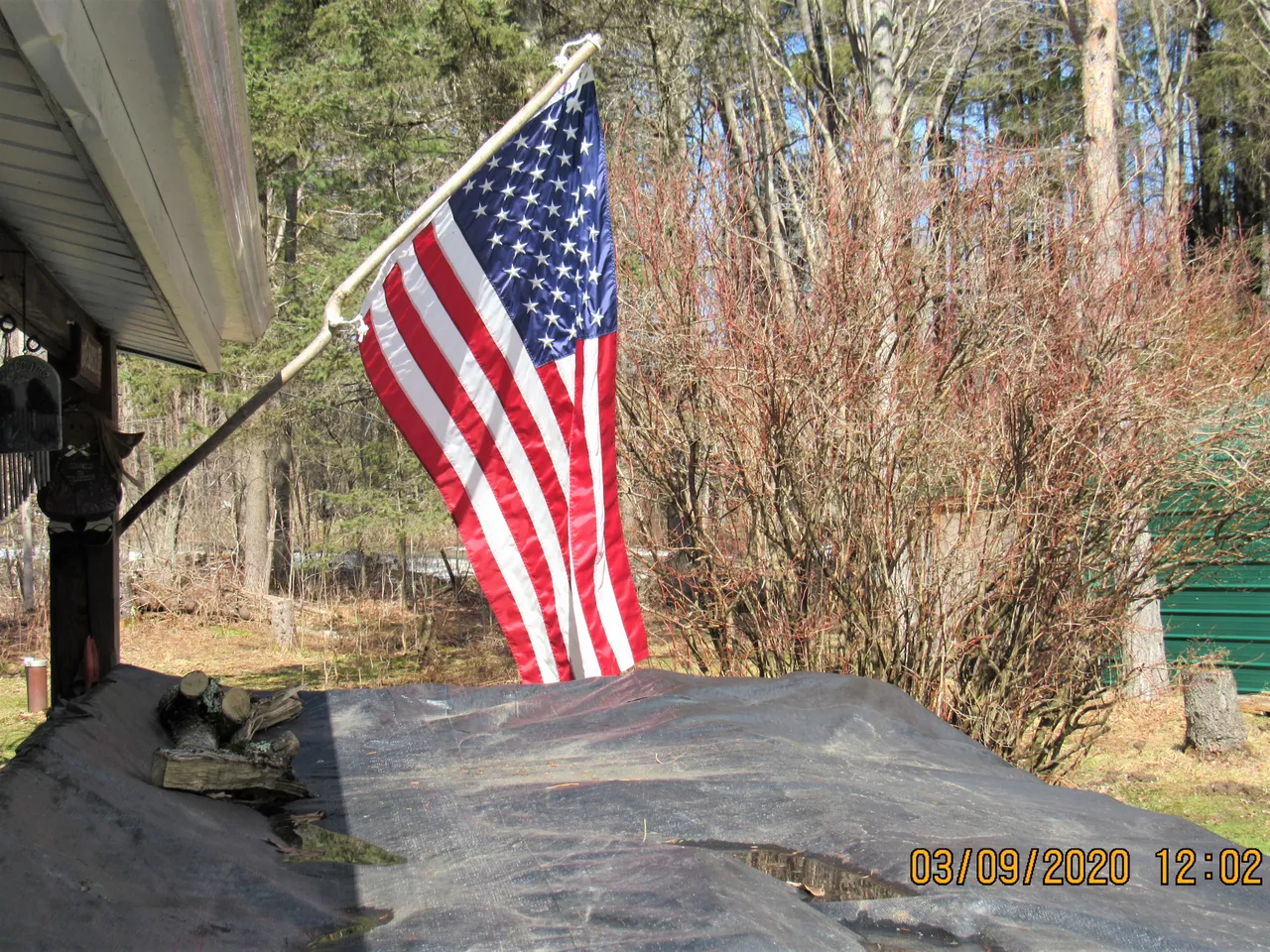
Less than 36 hours later I had collected 42 gallons of sap.
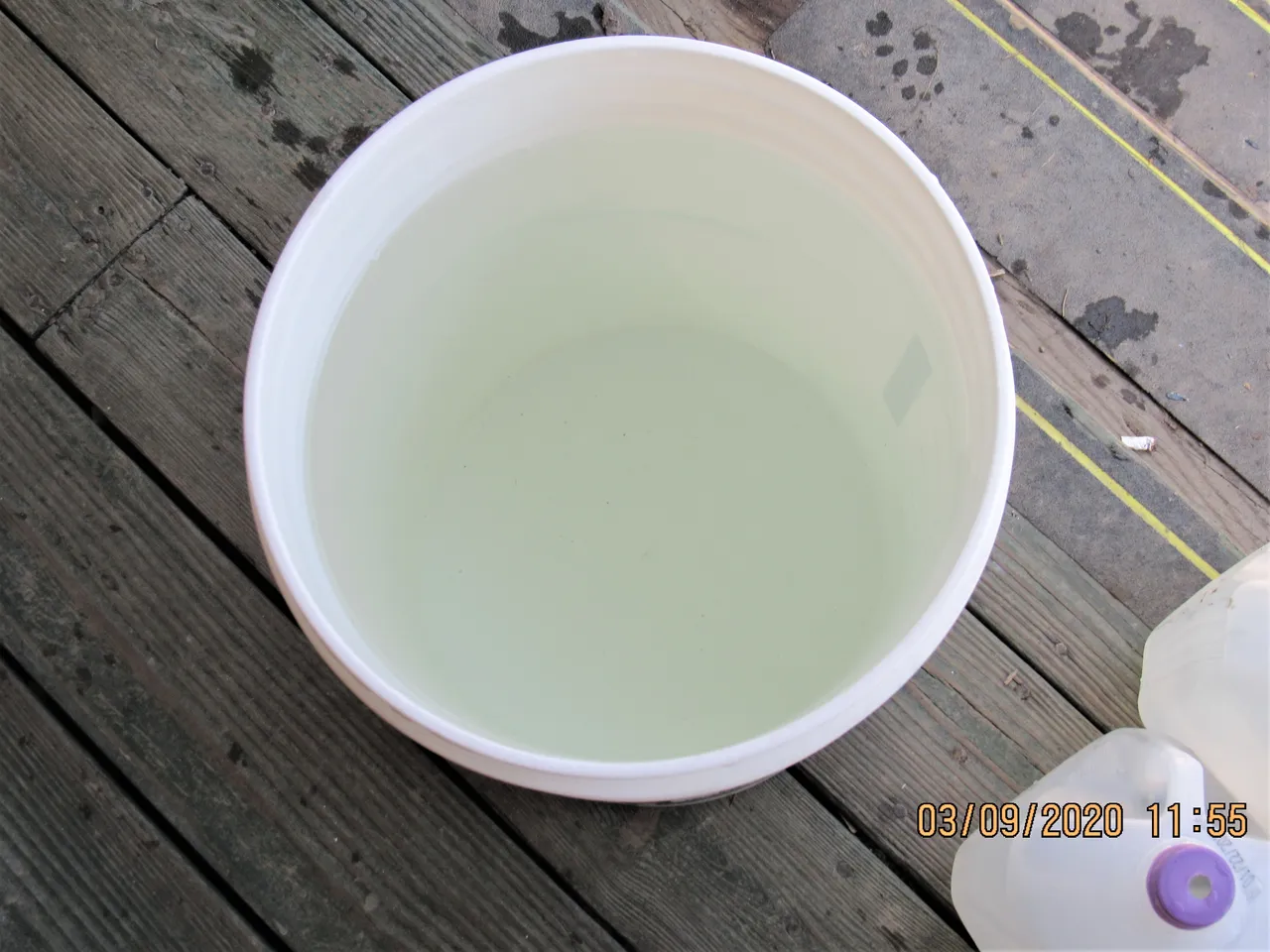
While emptying the jugs, the tubing is curled up and pinched behind the tap so that none of the sap is wasted.
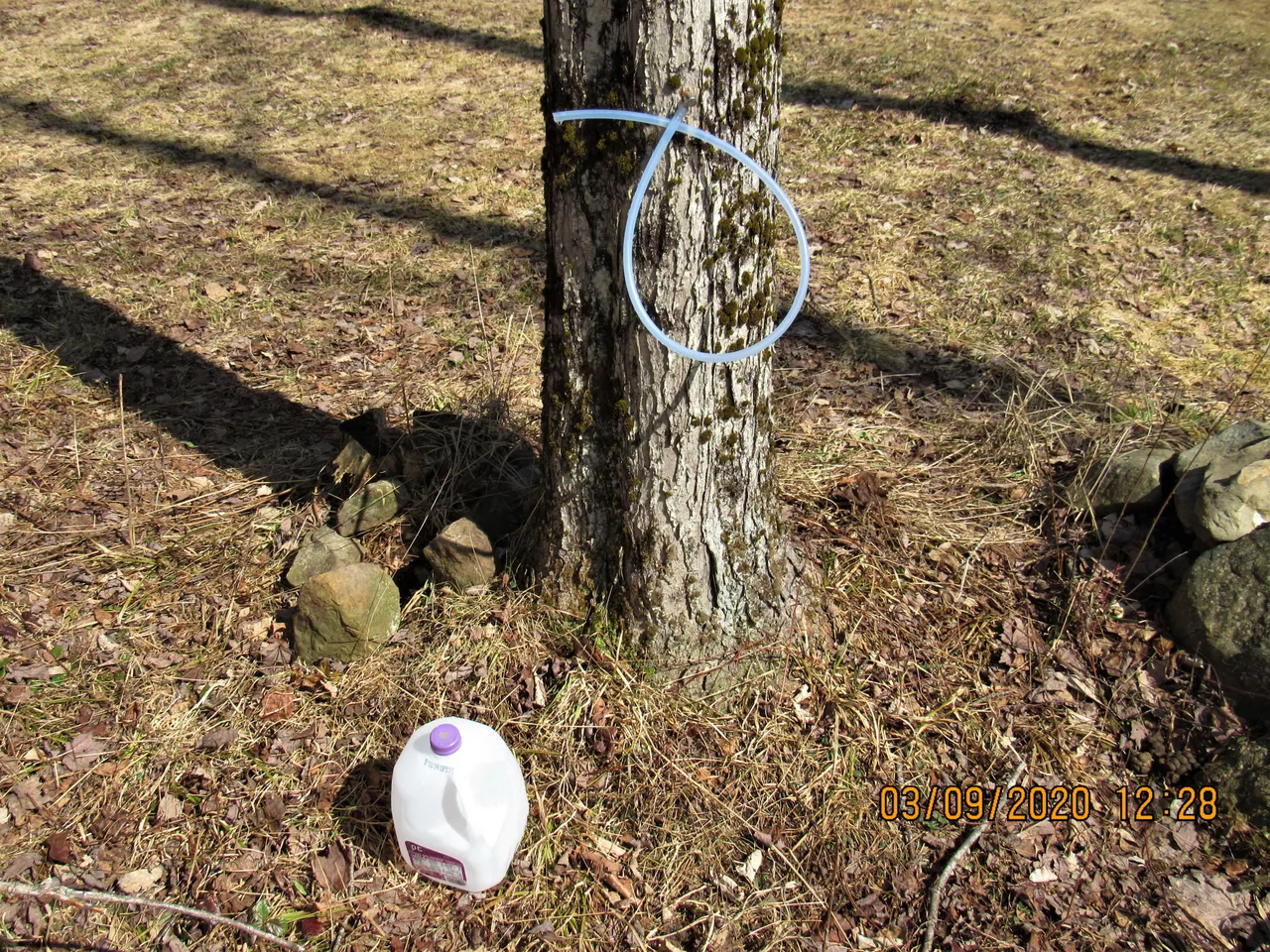

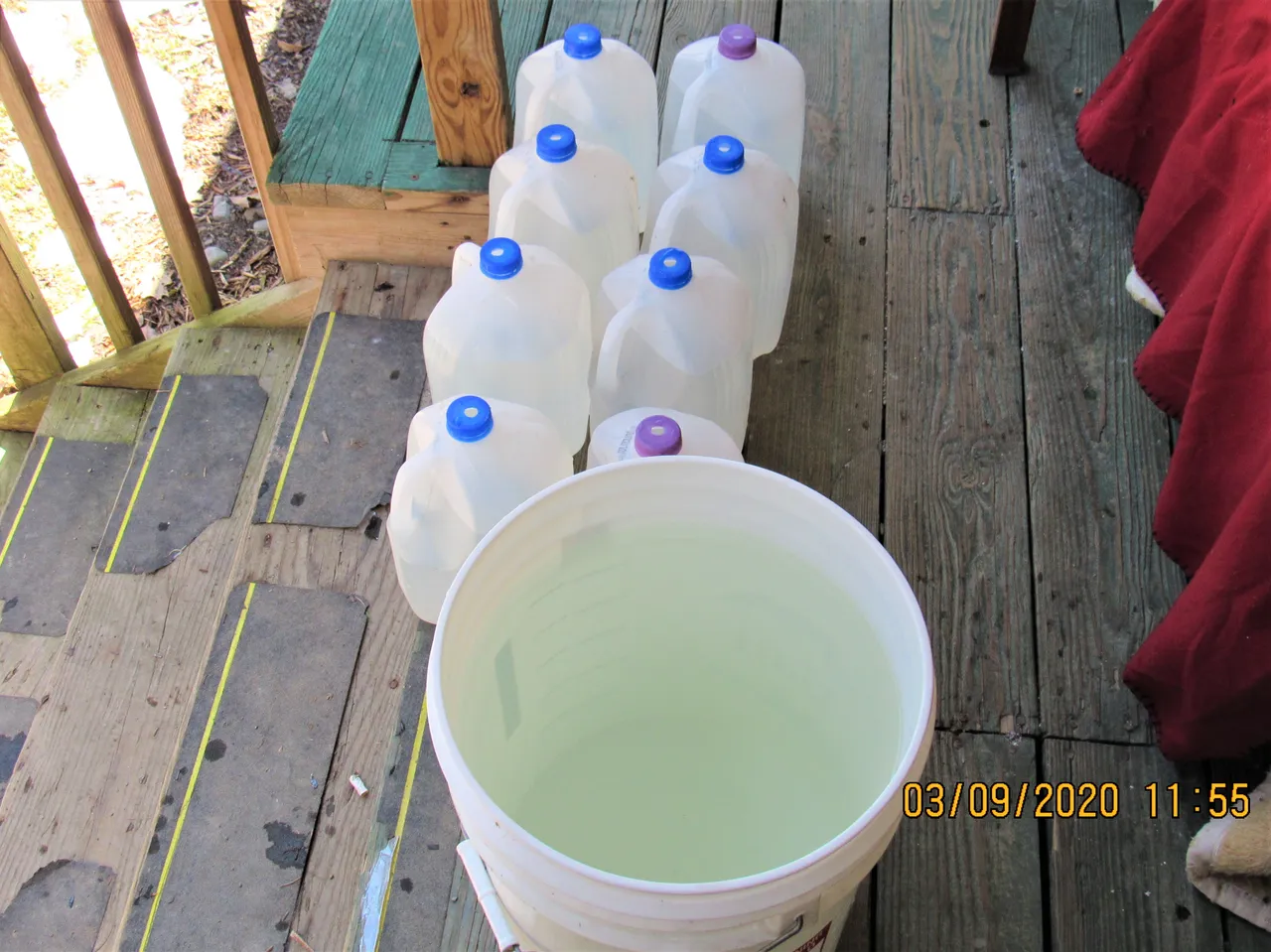
Over the next several days the weather was not as cooperative and we only collected an additional 12 gallons.
42 gallons the first 36 hours and 12 gallons over the next several days works for me. 54 gallons in total, time to boil.
We will be cooking the sap tomorrow and I will be more than happy to share with everyone interested, the next steps in making Maple Syrup.
Mother nature sure knows how to provide for those of us willing to try something new. This will be our 4th year of making syrup, and when we first started we had no idea what were doing. With some effort and very little expense, you can be transforming sap into one of nature’s finest sweeteners.
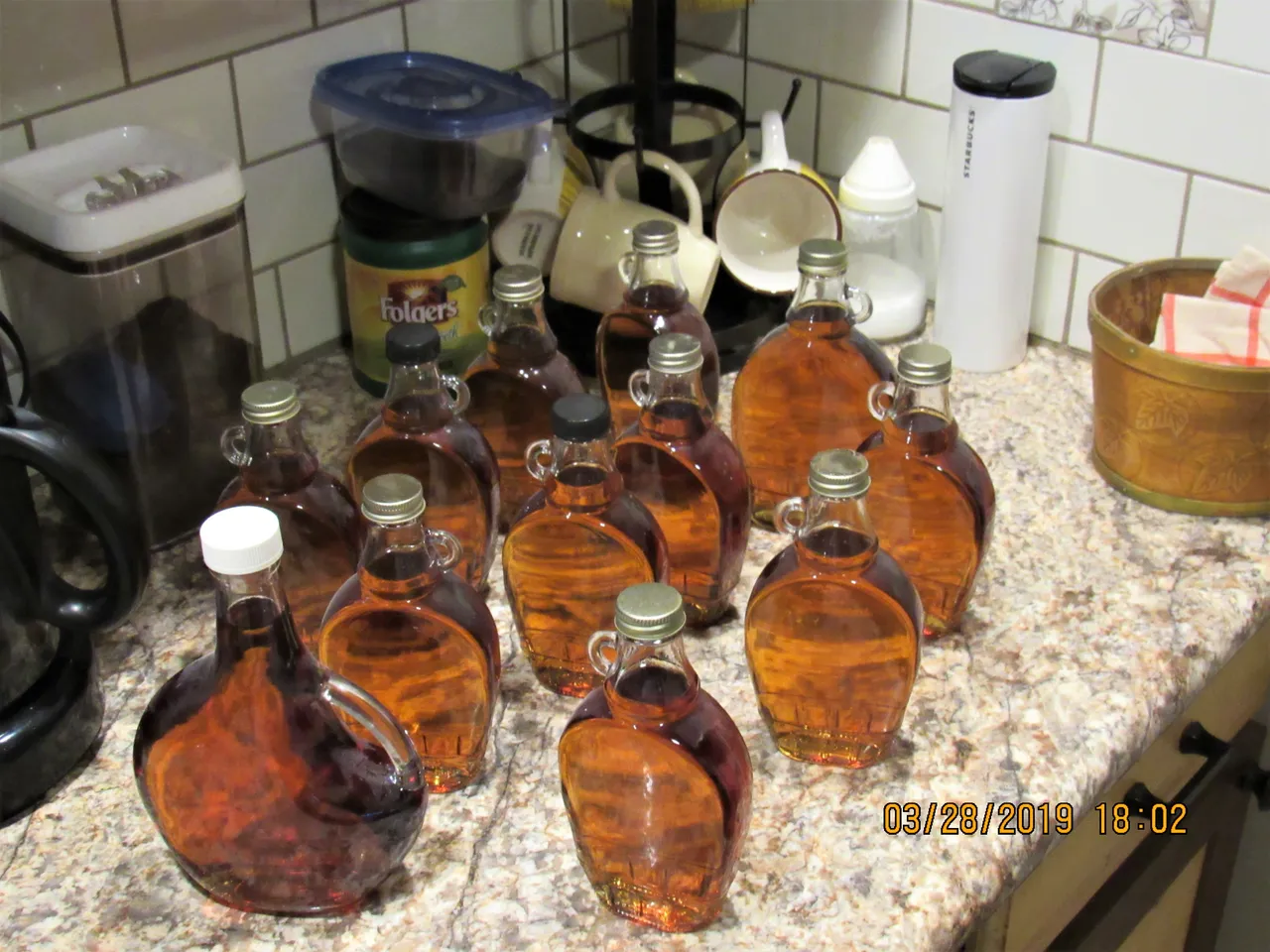
There is no fresher water in the world then that from a Maple tree. I like to keep a couple of gallons around for drinking. It has a slight sweet taste and I also appreciate its content of vitamins, minerals, enzymes, amino acids, polyphenols, and other health-promoting compounds.
